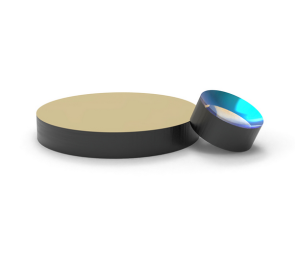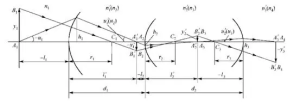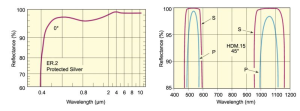Collimator is for point light source, and the so-called point light source, we see more in life, such as: match head lighting, the bulb of old-fashioned flashlight, and the laser coming out of the energy fiber. For the industrial laser industry, the collimator is basically about the laser coming from the energy transmission fiber.
After passing through the fiber collimator, the laser enters the focus lens of the fiber cutter. According to theory, the focus of the collimator is divided; Focusing lens focal length=the ratio of the energy density after focusing to the previous density, for example, the focal length of the collimator is 75mm, the focal length of the focusing lens is 150mm, 75÷ 150=1/2, that is to say, the area of the focus spot after passing through the focusing lens is twice as large as the area of the point light source just coming out of the energy fiber, and the energy density is 1/2 of the original.
Someone asked, why should we reduce the energy density? Isn’t it better to concentrate the energy density? There are several reasons:
: If the focal length of the focusing lens is shorter, the focal depth of the focusing lens is shallower, and shallow focal depth will easily lead to poor cutting.
Second, the shorter the focal length is, the smaller the focus is, the smaller the slit is. The smaller the slit is, which is not conducive to the falling of the molten slag from the cutting, resulting in the incomplete cutting. Therefore, we generally try to use the focal length between 120-150mm to make the focus lens of the optical fiber cutter.
In addition, there are two reasons why we don’t use the collimator with long focal length: ① using the optical fiber collimator with long focal length requires a larger lens diameter, which will cause more trouble in mechanical design; ② Using a long focal length optical fiber collimator will result in being sensitive to the focus point of the optical fiber cutter when focusing. Once it deviates from the focus of the focusing lens a little, it will appear the phenomenon of cutting through. This is why the focus of our general optical fiber cutting machine is generally between 60 and 100 mm.
Then let’s talk about beam expander. The beam expander also has the function of collimation, but the beam expander is for the beam (the beam with a certain divergence angle). The light from many lasers in our market is beam, such as CO2 glass tube, CO2 RF tube, lamp-pumped YAG laser, fiber laser with QBH, end-pumped 355nm 532nm 1064nm laser, etc. The light from these lasers is beam, And they are not strictly parallel light (when the beam quality M2 of a laser is 1, the light of the laser has no divergence angle, but this can only be an ideal state, which does not exist in real life. Generally, it is good if the M2 coefficient of the laser on the market reaches 1.2).
Now we will talk about why the beam expander can play the role of collimation. As we all know, the beam expander can expand the beam, which is to expand the beam waist radius in a professional way. The product of the beam waist radius and the divergence angle of the laser is a fixed value. The increase of the beam waist radius (that is, beam expansion) will reduce the divergence angle (to achieve the role of collimation). There is a conclusion that after a beam expander of N times, The divergence angle of the laser beam is reduced to 1/4 of the original N, for example, after passing through a beam expander of 4 times, the divergence angle is reduced to 1/4 of the original, which is why we try to use a beam expander of a larger multiple (the premise is that the beam size after passing through the beam expander should not exceed the size of the galvanometer spot).
The collimating mirror includes: the collimating mirror of the optical fiber welding machine and the collimating mirror of the optical fiber cutting machine. The beam expander includes: CO2 beam expander, 532nm beam expander, 355nm beam expander, 1064nm beam expander and 650nm beam expander.




